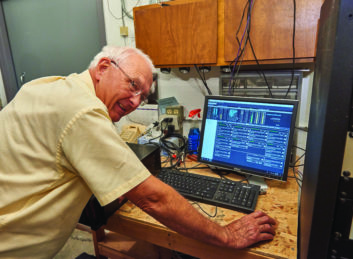
The author is president of American Christian Network, ACN and LBS Radio Networks.
SPOKANE, Wash. — Our part of the country is dotted with large farms located great distances from any size city. Therefore, our AM stations, which are affiliates of our faith-based radio network, are critical for reaching our listeners. Our terrain encompasses many high hills and mountains, so FM does not work well for the large areas that we need to serve.
Our programming comes to us from many sources and at a huge variance of overall volume. Our old processing simply couldn’t keep up with the changes that well. In attempting to maintain a high level of modulation, I could not eliminate the rushing sound or what listeners say is “heavy breathing.” Frankly, those artifacts drive me nuts and have to be avoided!
[Related: “How to Pick an On-Air Processor”]
When I heard through Broadcast Supply Worldwide that Bob Orban had developed a new AM processor that would allow correct modulation, balance low- and high-input signals without distorting, all without the rushing sound of breathing, I wondered how that was possible technically. But having met him when I was a director of the NAB, I knew he was brilliant and if anyone had found an answer to this problem, it would be Bob.
I asked BSW if I could test the new Orban XPN-AM processor at KTBI, our 50,000 watt clear channel daytime station on 810 kHz, located in the Wenatchee/Ephrata region of Washington state. They agreed and sent Orban’s Mike Pappas to assist with the installation. When Mike arrived, I told him I was somewhat doubtful that all of my concerns with AM modulation could be solved, but I was ready to learn.
Mike installed the XPN-AM at KTBI and trained Bill Glenn, our engineer, on its use. Not only did the XPN-AM ensure proper modulation and eliminate the “heavy breathing” artifacts, it improved our coverage! While I could always tell KTBI was on the air in my car around Spokane (about a two-hour drive from the transmitter), now I could actually listen to KTBI there … and areas where I was not able to hear KTBI well at all, were now listenable.
On a recent trip back from California, I was amazed at areas in Oregon where KTBI, once hardly audible, was now really listenable. I drive that same area several times a year so I knew what our 810 signal was like.
Needless to say, I was immediately “sold” and told BSW to forget the test, I was keeping the XPN at KTBI.
Next, I wanted to see what the XPN-AM would do for a great low AM frequency, 630 kHz, that was hampered by limited daytime power, 600 watts or so. Mike was again enlisted to install the unit at KTRW (known as KTW) in Spokane. We had a loyal listener in a rocky area in a little town to the northwest of Spokane who could receive our 630 signal, but with a lot of noise. I contacted that listener the day before Mike installed the XPN-AM and told her I wanted a comparison with her reception the next day.
After Mike got the XPN-AM on the air, I emailed our listener and learned she was thrilled that now she could hear 630 without all the background noise.
In case you’re wondering, when we were testing the XPN-AM we wanted to make sure that we were comparing our former processing when it was operating at its peak performance, so I asked Mike to adjust the old processor before he switched over to the XPN-AM so that it would be a fair comparison. Without a doubt, the XPN-AM has outperformed the older processor. Our audio quality is also cleaner than it was. It has always been good, but the XPN-AM is very clean and is able to handle a wide variation of gain from a range of programming sources without distortion. I am fussy about our audio because I still find time to do some on air work as “talent.”
I don’t know what sorcery Bob Orban developed for AM processing, but it is magical. We run the same program on one of our FMs and an AM with the XPN-AM and it is difficult to tell the difference in audio quality. I don’t hear that from other stations.
I have to say, too, that Orban’s customer service is second to none. I could not have conducted these tests without their expert help. A little “mom and pop” operation like ours — a growing rarity these days — really needs this kind of expertise and it’s greatly appreciated. I can’t say enough about their support.
Bottom line? The XPN-AM is worth the price for both high- and lower-power licensed AM stations.
For information, contact Mike Pappas at Orban in New Jersey at 1-856-719-9900 or visit www.orban.com.




